Cretan cuisine is a traditional cuisine that originated on the Greek island of Crete. It is a Mediterranean-style cuisine that emphasizes fresh, seasonal ingredients, including fruits, vegetables, legumes, and olive oil. Here are some of the most popular Cretan foods:
Dakos: A traditional Cretan dish that consists of a barley rusk topped with tomato, feta cheese, and olive oil.
Dakos/ Ntakos is a traditional Greek salad from the island of Crete. Extra virgin olive oil, juicy tomatoes, salty feta cheese combine to form a unique salad with barley rusks!
Since ancient times, Cretan cuisine has been based on several basic elements: olive oil, herbs, fish and seafood, goat or lamb meat,
Souvlaki has the first position in Cretan food, especially when the Cretans joined chicken meat, skewer, fast food, souvlaki is the beloved food of all visitors, the easiest sold street food that satisfies all ages of people!
Gamopilafo: A rice dish that is traditionally served at weddings and other celebrations. It is made with beef or lamb broth, lemon juice, and butter.
Kaltsounia: Small, savory pastries filled with herbs, cheese, and/or vegetables.
Ntakos: A variation of dakos that uses a softer bread as the base, often topped with chopped tomatoes, olives, and feta cheese.
Boureki: A vegetable pie made with zucchini, potatoes, and cheese, often served as a side dish or a light meal.
Sfakiani pita: A sweet, cheese-filled pastry that is often served for breakfast or as a dessert.
Tzatziki: A dip made with strained yogurt, cucumber, garlic, olive oil, and herbs, often served with bread or as a condiment with meats and vegetables.
Tzatziki is a traditional Greek dip or sauce that is typically made with strained yogurt, cucumber, garlic, olive oil, and herbs such as dill or mint. The yogurt is often drained to remove excess water, which makes the dip thicker and creamier.
To make tzatziki, you will need:
- 2 cups of strained Greek yogurt
- 1 medium cucumber, peeled and grated
- 2-3 cloves of garlic, finely minced
- 2 tablespoons of extra virgin olive oil
- 1 tablespoon of freshly squeezed lemon juice
- 1 tablespoon of chopped fresh dill or mint
- Salt and pepper to taste
Gigantes: Large, creamy white beans that are often served as a side dish or in salads.
Souvlaki: Grilled meat skewers, typically made with pork, chicken, or lamb, and served with pita bread, tzatziki, and vegetables.
Greek Salad: A classic salad made with fresh tomatoes, cucumbers, onions, olives, and feta cheese, dressed with olive oil and vinegar.
These are just a few examples of the many delicious and healthy dishes that can be found in Cretan cuisine. The cuisine is characterized by its use of fresh, wholesome ingredients, and simple yet flavorful cooking techniques.
Gamopilafo Cretan cuisine
Gamopilafo is a traditional Cretan rice dish that is often served at weddings and other celebrations. The name “gamopilafo” literally means “wedding rice” in Greek. It is a simple yet delicious dish that is made with only a few ingredients, including rice, butter, lemon juice, and meat broth.
To make gamopilafo, the rice is first sautéed in butter until it becomes slightly translucent. Then, the meat broth and lemon juice are added, and the rice is cooked until it becomes fluffy and tender. The dish is typically served with a simple salad or roasted vegetables on the side.
The key to making a delicious gamopilafo is to use high-quality ingredients, particularly the broth. Traditionally, gamopilafo is made with beef or lamb broth, which adds a rich, meaty flavor to the dish. Some recipes also call for the addition of herbs, such as thyme or rosemary, to add even more flavor to the rice.
Gamopilafo is a popular dish in Crete and is often served at special occasions such as weddings and baptisms. It is a simple yet elegant dish that highlights the traditional flavors of Cretan cuisine.
Ntolmades Cretan cuisine
Ntolmades, also known as dolmades, are a popular appetizer in Greek and Cretan cuisine. They are made by wrapping a mixture of rice, herbs, and often ground meat or vegetables, in grape or cabbage leaves, and then cooking them in a flavorful broth.
To make ntolmades, the filling is first prepared by sautéing onions, garlic, and ground meat or vegetables in olive oil, before adding rice, herbs, and spices. This mixture is then used to fill grape or cabbage leaves, which are then rolled up tightly and secured with toothpicks.
The ntolmades are then placed in a pot, covered with a flavorful broth, and cooked until the rice is tender and the flavors have melded together.
Ntolmades can be served warm or at room temperature, often with a drizzle of lemon juice or a dollop of tzatziki on top. They are a delicious and satisfying appetizer that highlights the flavors of the Mediterranean, and are often enjoyed as part of a meze platter or as a side dish to grilled meats or seafood.
All about the meal with Food Travel Crete.
A young Cook decided to visit the famous tavern in Gazi Ammoudara area. He wanted to see how some local food is cooked, the preparation and the time needed to do so. The local chef did not want to show him something difficult, he started with lamb on fire-antikristo- that needs a special technic when setting the lamb around the fire. this may take more time than the cooking.
After he managed to show him how to cook “ntolmades”, the preparation of the rice and all other materials needed, the leafs of grape trees and the way they are laid in the oven pan.




Ntolmades are one of the most famous food, made with grapes leafs and meat or rise, herbs are important to this recipe and each place has a better taste.
Antikristo Cretan cuisine
Antikristo is a traditional Cretan way of cooking meat, specifically lamb or goat, that involves roasting it on an open fire or hot coals. The name “antikristo” means “across” or “opposite” in Greek, and refers to the way the meat is prepared by skewering it through the entire body and suspending it over the fire.
To make antikristo, the lamb or goat is first seasoned with salt, pepper, and herbs, such as oregano and thyme. The meat is then skewered through the entire body, from one end to the other, and suspended over the fire or hot coals. The meat is roasted slowly and evenly, with the outer layer becoming crispy and charred while the inside remains juicy and tender.
Antikristo is often served with traditional Cretan sides such as roasted potatoes, vegetables, or a simple salad. It is a popular dish in Cretan cuisine, particularly at festivals and celebrations, and is known for its robust flavor and tender texture. It is a dish that is deeply rooted in the traditions of the island, and is often prepared by local farmers and shepherds using traditional methods passed down through generations.
Mousaka Cretan cuisine
Moussaka is a traditional Greek and Cretan dish that is made with layers of sliced eggplant, spiced meat, and a creamy béchamel sauce. The dish is typically baked in the oven until the top becomes golden brown and the flavors have melded together.
To make moussaka, the eggplant is first sliced and then fried or grilled until it becomes tender and slightly caramelized. The spiced meat, which is typically ground beef or lamb, is then cooked with onions, garlic, and herbs such as oregano and cinnamon, before being layered on top of the eggplant.
A creamy béchamel sauce, made with butter, flour, milk, and eggs, is then poured over the top of the meat and eggplant layers. The moussaka is then baked in the oven until it becomes golden brown and bubbly.
Moussaka is a beloved dish in Greek and Cretan cuisine, and is often served at family gatherings and special occasions. There are many variations of moussaka, with some recipes calling for the addition of potatoes or zucchini, and others using different types of meat or omitting it altogether for a vegetarian version. Moussaka is a hearty and flavorful dish that is perfect for sharing with friends and family.
Vegan food CreteThe Cretan plant based diet is enhanced by bitter greens, cultivated or handpicked on Cretan mountains. They are consumed raw, boiled or cooked; for example in red sauce and accompanied by potatoes. They also form part of delicious cretan green pies (“hortopites”). Bitter greens apart from being full of A, C and K vitamins, fiber, potassium and folate, they also have amazing body cleansing properties.
Cooked snails with bitter greens is a tasty vegan cooked food served in most restaurants of the island! The way it is getting prepared-the food the snails have to eat before they get cooked- are secrets locals know very well.
CRETAN HONEY – Vegan food
Crete produces a variety of natural therapeutic substances such as herbs, honey, various types of teas, types of herbs and more. From the ancient Greeks came most of the information we already know about their miraculous properties, as they studied thoroughly and in detail everything related to human well-being and the medical field in general. One of these is Cretan honey.
- +30 2810821424
- info@athenscars.gr
- 24hours Service, Resevations +2.00 GMT 09.00-21.00
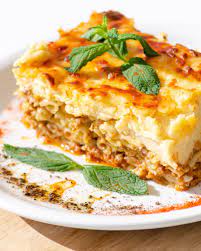
 Dakos/ Ntakos is a traditional Greek salad from the island of Crete. Extra virgin
Dakos/ Ntakos is a traditional Greek salad from the island of Crete. Extra virgin 
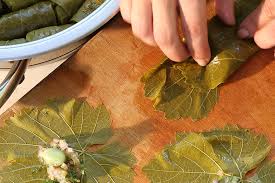
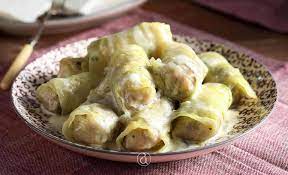

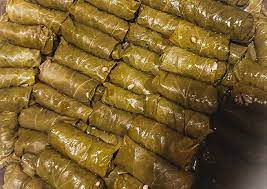
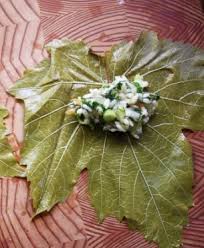 Ntolmades are one of the most famous food, made with grapes leafs and meat or rise, herbs are important to this recipe and each place has a better taste.
Ntolmades are one of the most famous food, made with grapes leafs and meat or rise, herbs are important to this recipe and each place has a better taste. The Cretan plant based diet is enhanced by bitter greens, cultivated or handpicked on Cretan mountains. They are consumed raw, boiled or cooked; for example in red sauce and accompanied by potatoes. They also form part of delicious cretan green pies (“hortopites”). Bitter greens apart from being full of A, C and K vitamins, fiber, potassium and folate, they also have amazing body cleansing properties.
The Cretan plant based diet is enhanced by bitter greens, cultivated or handpicked on Cretan mountains. They are consumed raw, boiled or cooked; for example in red sauce and accompanied by potatoes. They also form part of delicious cretan green pies (“hortopites”). Bitter greens apart from being full of A, C and K vitamins, fiber, potassium and folate, they also have amazing body cleansing properties. Cooked snails with bitter greens is a tasty
Cooked snails with bitter greens is a tasty 